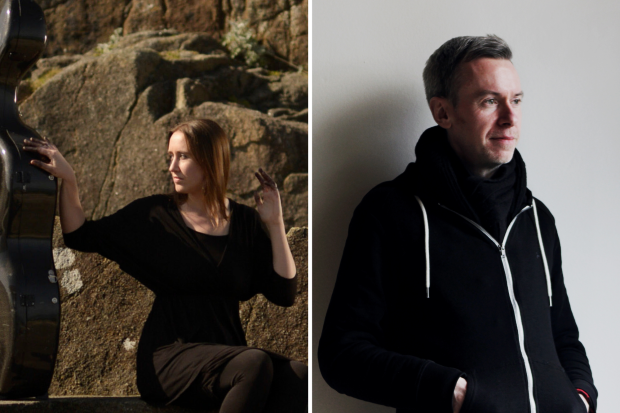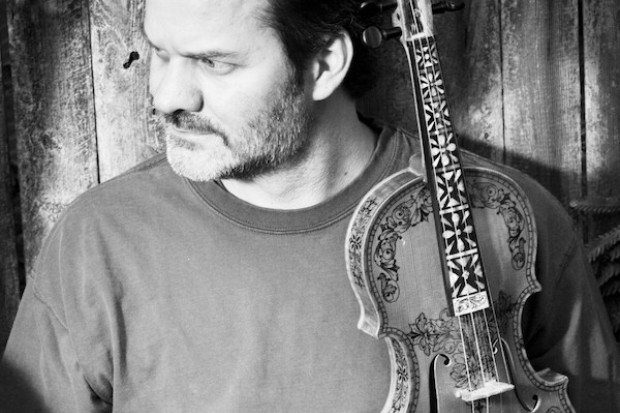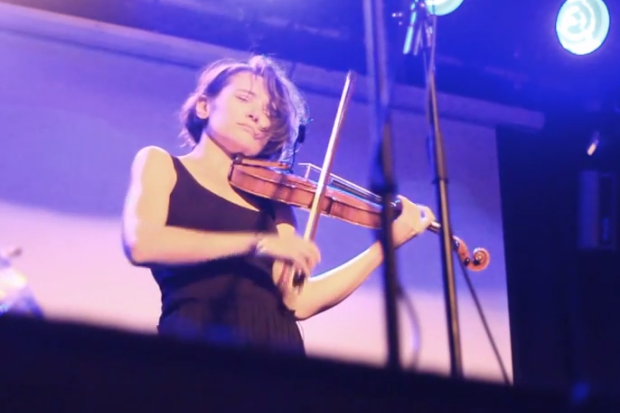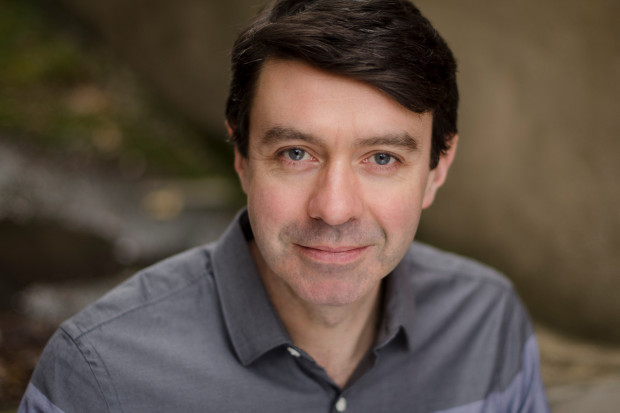
Photo: Myles O'Reilly
Intimate Space
Laura Sheeran’s songs are dark and intimate; these are the songs of long, icy winters spent indoors looking out at the growing frost. Her songs are created from dense vocal layers, and almost choral textures that emerge from simple lines and create their own suspended time and space. Each song gives you the feeling that you are in fact walking through Sheeran’s mind, feeling the natural ebb and flow of emotions, in both gentle waves and crashing floods. It comes as no surprise to learn that her music are formed from instinct: they flow so naturally because that is how they were written, in an organic flow of creativity that pays no heed to imposed structures or constructs.
Sheeran started playing and writing music at a very young age, going to regular music lessons as a young child — but always more interested in creativity than disciplined learning. She was writing songs from the age of ten, songs that were even then infused with the emotional uninhibitedness that characterises her music now. ‘Kids are so creative and free musically,’ she says. ‘Unless you give them rules, they don’t have any. And they will just come out with anything.’ Sheeran puts high value on the musical freedom she felt as a child. ‘It’s a freedom I’ve always felt, up until about my late teens, when I realised that people had opinions, then I thought I should write something that people will like.’
Despite taking to music from such a young age, she still never even considered that a life of music could be for her, without formal training. Fully intending a career in art and clothes-making — an interest she still pursues — and shocked when that didn’t work out as planned, she simply fell into the music world instead. Taking up offers to write music for plays and similar projects (working with friend and playwright Little John Nee) and working full time on her own songs and projects, she still couldn’t bring herself to call herself a musician. ‘I didn’t think I could be a musician — well, I am and I was, but I just didn’t realise you could be a musician without being educated in it,’ she explains. ‘It was just a mental block, even though I was doing music every single day.’ For her, music was such a natural and organic process and her songs simple diversions, expressions of her own thoughts, that she could not reconcile herself with her image of the ‘professional musician’.
It took her over a year to come to terms with her passion also being her profession, but it was this year that most shaped her music into the sound and style we now know her for. Working on film and theatre soundtracks at the age of seventeen took the focus from her own guitar- and piano-based tracks and taught her how to shape music into more deliberate expressions. ‘I got a real feel for atmospheric music, which was really important to me as it meant that the music was more than just writing songs on a guitar, it was writing music to create moods and make people feel something, using music in a way that isn’t all about you. It was creating music for the sake of the music, and to create an emotional response.’ This sensitivity to atmosphere in mood that she developed through these projects is evident in the music she has created since, particularly in her solo albums Murderous Love, and the recently released What the World Knows, in which her delicately emotional songs are as evocative as any soundtrack.
An organic process
The pervasive dark atmosphere and textures of her albums Murderous Love and — to a lesser extent — What the World Knows was arrived at by a path of vocal experimentation, which she was led to partly by self-consciousness (and a desire to hide her own voice) and partly by accident. Unusually for a singer-songwriter, but perhaps not unexpectedly for Sheeran, in listening to any of her tracks it is difficult to separate song from texture or basic materials from arrangements. That is because for her it is all one: the song is built organically from just one fragment into a full track through a process of addition.
Most of Sheeran’s recording is done at home. She always has a laptop and microphone, or recording device of some kind nearby, so that when she has an idea, be it a full vocal line or nothing more than a run of notes, she will sketch it down using her voice. Though she is a skilled guitarist and pianist, her voice is always her instrument of choice, and is the instrument she uses to build up the layers of her track. From the simple first idea, she will add more lines, using her voice melodically and texturally, mixing pure sung lines with harmonies and vocal sounds. As well as harmonies to the main melody, she will also double it, creating a full vocal tone that will inevitably become the song’s focus.
Sheeran follows the ‘flow’ and movement of the song in figuring out more and more layers, and keeps nearly everything she lays down in this initial outpouring; the only parts she discards are ones that would better suit the songs texture when played by another instrument, usually strings, but sometimes harp or piano. These she replaces later, recording and mixing in fiancée and musical partner Marc Aubele’s studio. Even then Sheeran will rarely even rerecord her vocals, preferring the lo-fi nature of the home recordings. In writing What the World Knows, electronics played a much greater part in the composition of the songs: synths, samples and beats increasingly took the place of her voice in creating the textures that she wants.
Her songs are never planned, never worked out, and most are written and recorded in just one day. ‘It’s an organic thing as I’m not thinking about structures. I’m not thinking of any musical information really, I’m just thinking of the sounds and the moods.’ In this way, within an evening, she will have a complete track, played out and written by feel, channelling a passing mood. Even the lyrics just flow naturally: ‘I’ll realise later that I’ve naturally been drawn to certain phrasing and that’s what I stick with. I’ll find the words within that: the words are already there, I just don’t know what they are yet. And it’s nearly always something relevant. You realise that you channelled something into the song and didn’t even know. You have to trust your subconscious to construct those things for you. Often it just delivers itself at your door, fully formed. To me this is totally normal. It’s the only way of working.’
This is why, perhaps, all of Sheeran’s tracks seem to lack the conventional song structure, relying instead on the natural flow of songs. As she puts it, ‘sometimes it just gets in the way of the flow of the song; if you’re writing to fit in with a conventional song structure, it’s very limiting. I tend to work on the basis of figuring out where the music wants to go first.’ It is what makes Laura’s music so distinctive amongst her contemporaries. The flagship single from the new album, ‘Forever Love’ is an example of a song created in just one day and Sheeran’s first foray into the love song. Despite the gloomy beauty that pervades all her music, is a very successful journey: equal parts whispered intimacy and strong emotion, she has captured a all elements of a powerful emotion in something very simple. The claustrophobic ‘Redlight’ was also created in just one day, with the same method but a result that is a world away in intent. Where ‘Forever Love’ is sweet, ‘Redlight’ is aggressive, where one is giving, the other is pleading desperation. Even the vocals are destroyed through extreme distortion rather than lifted with gentle reverb.
More powerful and strong
Space in music is very important to Laura Sheeran. The space created in Murderous Love was a static one, a brittle lattice of strings, piano and occasional electronics, tentatively suspending the heavy vocals. In the new album, though the dark atmosphere has mostly remained, a shift of emphasis away from instruments and toward electronics have created a greater variety of spaces, few of them as tenuous as those on the earlier works, but many with a similar sense of delicacy. More prominent throughout is percussion, with tracks like ‘Lonesome Soldier’ and the positively upbeat ‘The Devil’s Tongue’ relying more on the momentum provided by heavy backbeats than the gentle flow of older songs. Alongside these is ‘Until Danger’s Gone’, an almost acoustic track with Sheeran’s wrenching melodies over a solid cello base (played by Kate Ellis), and ‘Death of A Star’, which harks back to her earlier choral songs, but underpinned by a current of distortion and harsh percussion.
What the World Knows is a more aggressive and more confident album, but also a better balanced one. Though Laura Sheeran may not have planned for it she is fully aware of the new dynamic that has crept into her work, and best describes it in terms of the colours she uses in the artwork for each. ‘Murderous Love was all shadowy, with dark blues and shady greens, and this album is a lot more powerful and strong, so it’s all gold and red and orange, solar colours. That’s the feeling of the album.’ Her songs, through this love of atmosphere and space, and the bare, open emotion that guides her as she writes them, have evolved into an album of greater depth, while retaining their own moody beauty.
Laura Sheeran performs at Whelan’s, Wexford Street, Dublin on Saturday, 19 May. laurasheeran.com
Published on 17 May 2012
Anna Murray is a composer and writer. Her website is www.annamurraymusic.com.















